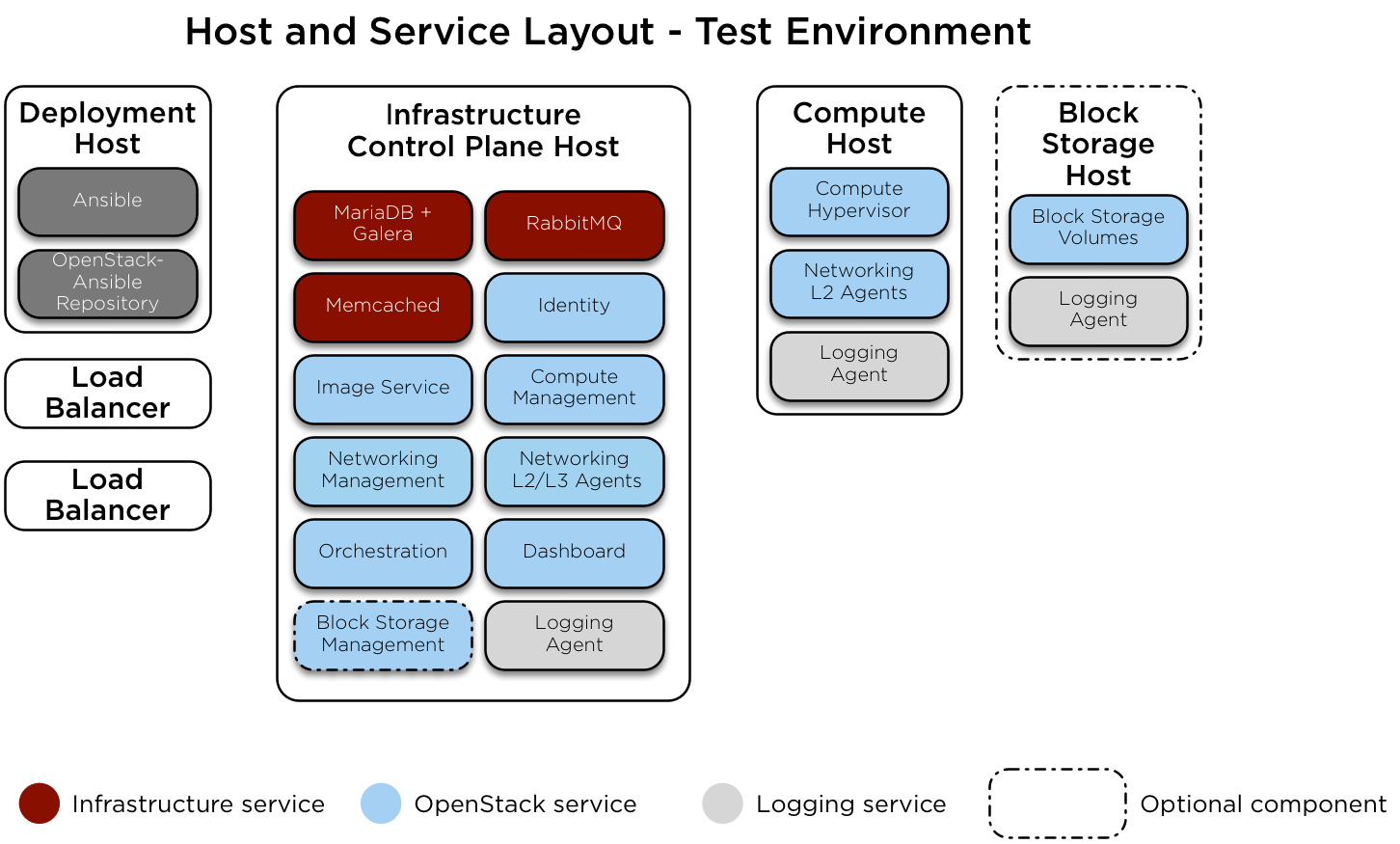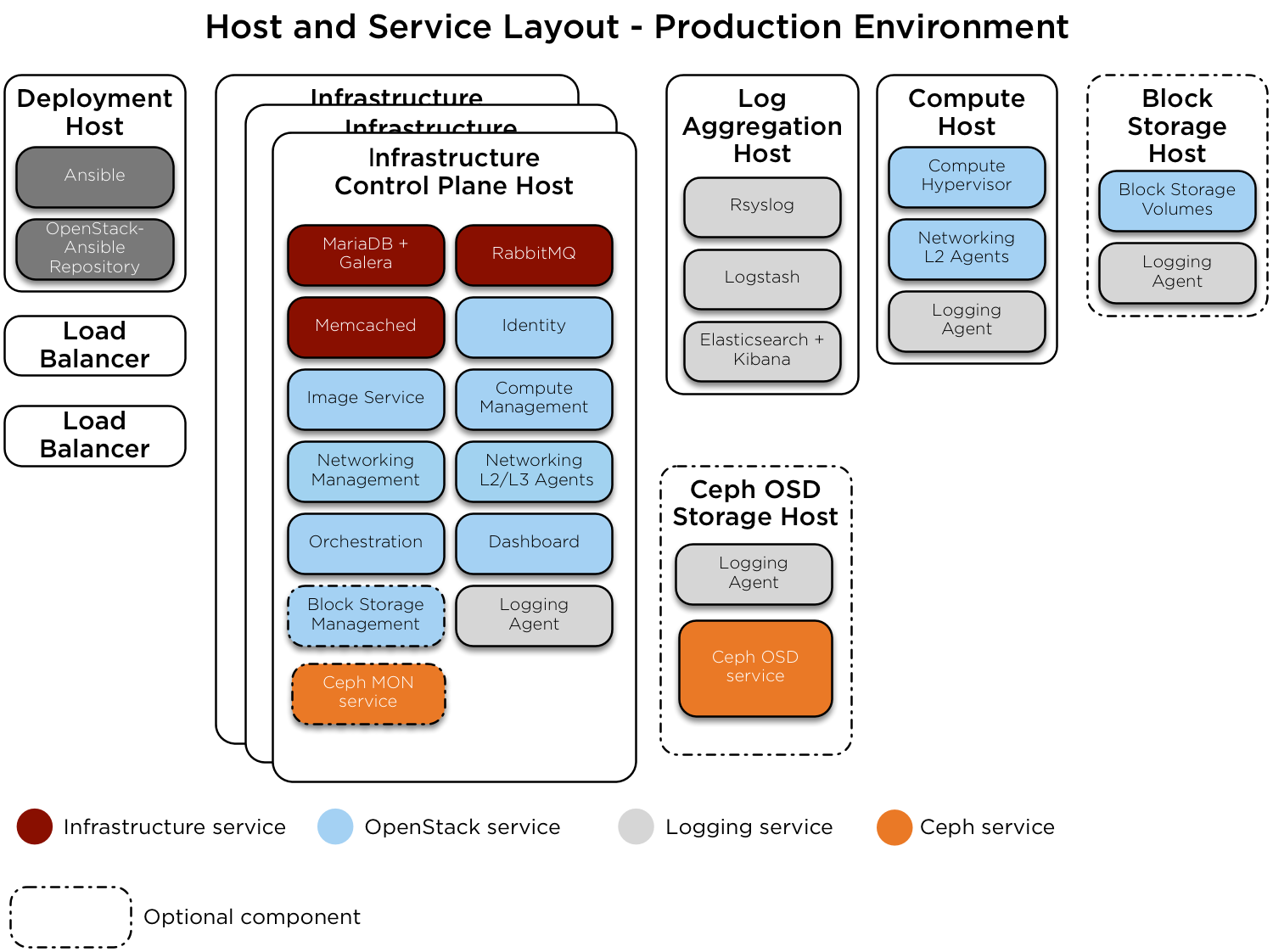2.8 KiB
Home OpenStack-Ansible Installation Guide
Host layout
The hosts are called target hosts because Ansible deploys the OSA environment within these hosts. We recommend a deployment host from which Ansible orchestrates the deployment process. One of the target hosts can function as the deployment host.
If the optional Block Storage (cinder) service is used, we recommend
using an additional host. Block Storage hosts require an LVM volume
group named cinder-volumes. See the section called "Installation
requirements" and the section
called "Configuring LVM" for more information.
Use at least one load balancer to manage the traffic among the target hosts. You can use any type of load balancer such as a hardware appliance or software like HAProxy. We recommend using physical load balancers for a production environment.
A Control Plane and Infrastucture target host contains the following services:
- Infrastructure:
- Galera
- RabbitMQ
- Memcached
- Logging
- Repository
- OpenStack:
- Identity (keystone)
- Image service (glance)
- Compute management (nova)
- Networking (neutron)
- Orchestration (heat)
- Dashboard (horizon)
Log aggregation hosts contain the following services:
- Rsyslog
Compute target hosts contain the following services:
- Compute virtualization
- Logging
(Optional) Storage target hosts contain the following services:
- Block Storage scheduler
- Block Storage volumes
Test environment
The test environment is a minimal set of components to deploy a working OpenStack-ansible environment. It consists of three hosts in total: one control plane and infrastructure host, one compute host and one storage host. It also has the following features:
- One Network Interface Card (NIC) for each target host
- No log aggregation target host
- File-backed storage for glance and nova
- LVM-backed cinder
Production environment
The layout for a production environment involves seven target hosts in total: three control plane and infrastructure hosts, two compute hosts, one storage host and one log aggregation host. It also has the following features:
- Bonded NICs
- NFS/Ceph-backed storage for nova, glance, and cinder
All hosts will need at least one networking interface, but we recommend multiple bonded interfaces.
For more information on physical, logical, and virtual network
interfaces within hosts see network-architecture.

